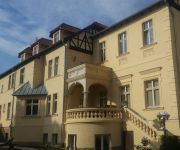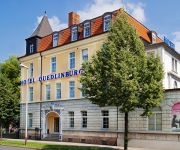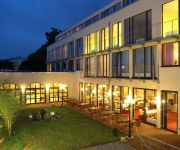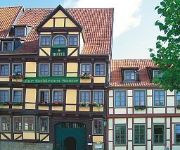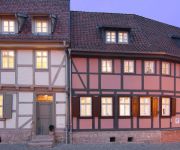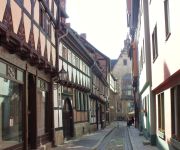Facts and Data
Webpages:
Official Unesco Page
Quedlinburg Unesco-Welterbe (in German)
View photos from OUR PLACE the World Heritage collection
UNESCO Commission of Germany
Altstadt von Quedlinburg (Deutsche UNESCO-Kommission)(german only)
Basis Data:
Unesco World heritage since: 1994
Size of heritage: 90 ha
- Buffer zone: 270 ha
Coordinates:
Longitude: 11,150°
Latitude: 51,783°
Summary
Quedlinburg, in the Land of Sachsen-Anhalt, was a capital of the East Franconian German Empire at the time of the Saxonian-Ottonian ruling dynasty. It has been a prosperous trading town since the Middle Ages. The number and high quality of the timber-framed buildings make Quedlinburg an exceptional example of a medieval European town. The Collegiate Church of St Servatius is one of the masterpieces of Romanesque architecture.
Location on Map
Show bigger map on Openstreetmap
Collegiate Church, Castle and Old Town of Quedlinburg
The Collegiate Church, Castle, and Old Town of Quedlinburg is a UNESCO World Heritage site located in the State of Saxony-Anhalt, Germany. This historic town is renowned for its well-preserved medieval architecture and its significant role in German history. The site encompasses the Collegiate Church of St. Servatius, the Quedlinburg Castle, and the charming Old Town, which together create a unique and captivating cultural landscape.
History
The history of Quedlinburg dates back over a thousand years. It was founded in the 10th century as a royal palace complex by King Henry I, the first ruler of the Saxon dynasty. The town quickly grew in importance and became a center of political and cultural influence in the region. In the 12th century, a Romanesque collegiate church was constructed, dedicated to St. Servatius, which became the spiritual heart of the town.
During the Middle Ages, Quedlinburg prospered as a trading hub and was granted numerous privileges, including the right to hold markets and mint coins. The town's wealth attracted wealthy noble families, who built magnificent timber-framed houses that still line the streets of the Old Town today.
In the 17th century, Quedlinburg experienced a period of decline due to the devastating effects of the Thirty Years' War. However, it was during this time that the town's medieval character was preserved, as economic stagnation prevented significant modernization. This fortunate circumstance has allowed Quedlinburg to retain its original architectural charm.
Current State
The Collegiate Church, Castle, and Old Town of Quedlinburg are exceptionally well-preserved, offering visitors a glimpse into the town's rich history. The Collegiate Church of St. Servatius is a masterpiece of Romanesque architecture, with its impressive towers and intricate stone carvings. Inside, visitors can admire the medieval crypt and the treasury, which houses a collection of precious religious artifacts.
The Quedlinburg Castle, perched on a hill overlooking the town, is a striking example of medieval fortification. Although it suffered damage over the centuries, extensive restoration work has ensured its survival. Today, the castle houses a museum that showcases the history of Quedlinburg and its surrounding region.
The Old Town of Quedlinburg is a labyrinth of narrow cobblestone streets, lined with over 1,200 half-timbered houses. These beautifully preserved buildings span several centuries and feature intricate carvings and colorful facades. The Market Square, with its Renaissance-style town hall, is the heart of the Old Town and a vibrant gathering place for locals and tourists alike.
Quedlinburg's UNESCO World Heritage status has helped to protect and preserve its historic buildings and cultural heritage. The town attracts visitors from around the world who come to experience its unique atmosphere and immerse themselves in its rich history. The annual Quedlinburg Christmas Market, held in the Old Town, is a particularly popular event that showcases the town's festive traditions and medieval charm.
In conclusion, the Collegiate Church, Castle, and Old Town of Quedlinburg in Germany's State of Saxony-Anhalt are a testament to the town's rich history and architectural beauty. This UNESCO World Heritage site offers visitors a unique opportunity to step back in time and explore a remarkably well-preserved medieval town.
Hotels and places to stay
Villa Le Palais
Wyndham Garden Stadtschloss
Quedlinburger Hof
Balneolum
St. Nikolai Pension
Dorothea Christiane Erxleben
Zur Goldenen Sonne
Urlaub im Fachwerk - der Klink
Fewo im Stieg
Fachwerkhotel Vorhof zur Hölle
Videos from the area
Videos provided by Youtube are under the copyright of their owners.

